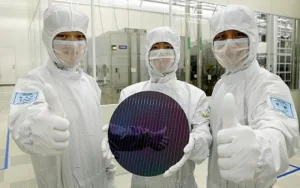Semiconductor revenue will rise 2.2% YoY this year, to $348 billion, says Gartner – although this is down from the Q4’14 forecast of 4% growth.
The outlook for major applications, which drive the semiconductor market, have all been revised downwards. These applications include PCs, smartphones and tablets. This, combined with the effect of the strong dollar on demand in key markets, has resulted in the lowering of Gartner’s forecast.
“The typical second-quarter bounce did not materialise this year, and as a result, the semiconductor industry is more back-end loaded and dependent on a strong third-quarter rebound, driven by Windows 10 and the ramp-up to the holiday season”, said Jon Erensen, Gartner research director.
Smartphones and SSDs will continue to drive the market, while traditional PCs will experience the largest decline: an 8.7% decline in unit production is predicted. Erensen said that PC inventory remains high, although vendors are seeking to clear it before the launch of Windows 10 and Intel’s Skylake platform. Any issues with these launches may lead to further declines.
Apple’s iPhone is the bright spot for the smartphone market. The handset is growing strongly in unit sales and ASPs are increasing, driven by the strong performance of the iPhone 6 and 6 Plus. High-end Android performance, however, has been ‘lackluster’. Combined with a general softening of China’s smartphone market, growth will continue to be impacted.
Wearables are a growing industry, but this segment will represent just 1% of semiconductor revenue by 2019 – including components. Smartwatches are the top product in the near term.
In terms of devices, DRAM continues to be a primary growth driver. However, Gartner expects an oversupply to develop next year, with revenues falling 17.4% in 2016 and 7% in 2017.

